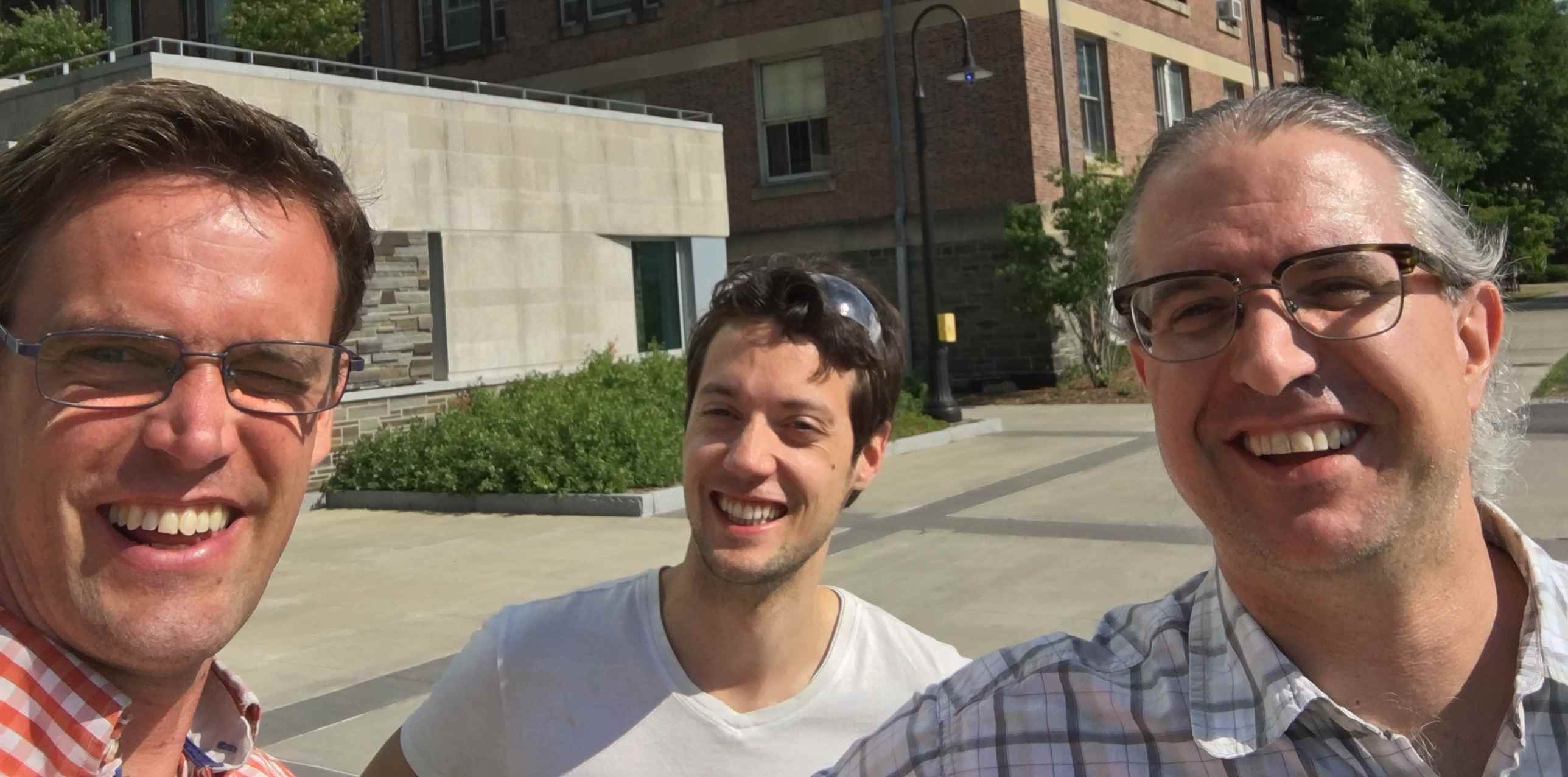This summer, it has been our group’s pleasure to host a visiting Masters-degree student, Mr. Rembrandt Donkersloot, from the Department of Physics at the University of Leiden. Rembrandt’s advisor, Professor Tjerk Oosterkamp, traveled to the U.S. this summer, and stopped by Cornell to visit Rembrandt and the Marohn group.
Professor Oosterkamp’s group detects magnetic resonance in thin-film samples at millikelvin temperatures mechanically , using a high compliance cantilever to which a few-micron-diameter magnetic tip has been affixed. Detecting a magnetic resonance signal in this experiment requires applying an oscillating magnetic field to flip the electron or nuclear spins in the sample. Because electron and nuclear spins carry a small magnetic moment, these spin flips create a detectable change in the amplitude or mechanical oscillation frequency of the nearby magnet-tipped cantilever. However, applying an oscillating field causes considerable heating for experiments performed at millikelvin temperatures in a dilution refrigerator. This heating problem has become a big challenge for their temperature-sensitive experiments and they have to work hard to minimize heat generation.
The Oosterkamp team creates the required oscillating magnetic field by running current through a microfabricated superconducting wire. There is a limit to the size of the oscillating field that can be created in this way however, because the current needs to remain below the superconducting wire’s critical current. They also rely on force-gradient approaches to mechanically detect magnetic resonance invented at Cornell University in the Marohn group. These experiments observe a change in the spin state of the sample as a shift in the mechanical resonance frequency of the magnet-tipped cantilever. The advantage of this approach is that the oscillating field only needs to be applied briefly, just long enough saturate the sample spins and drive the sample’s spin magnetization to zero. The sample’s longitudinal spin magnetization can then be watched in real time as it returns to equilibrium by continuously observing the cantilever’s resonance frequency .
Mr. Donkersloot worked with Hoang Nguyen, Pamela Nasr, and Corinne Isaac in our group this summer to explore using our group’s 100-nanometer-diameter magnetic nanorods in the Leiden magnetic resonance experiments.
Share on:
Email
❄ LinkedIn
❄ Twitter
❄ Facebook
